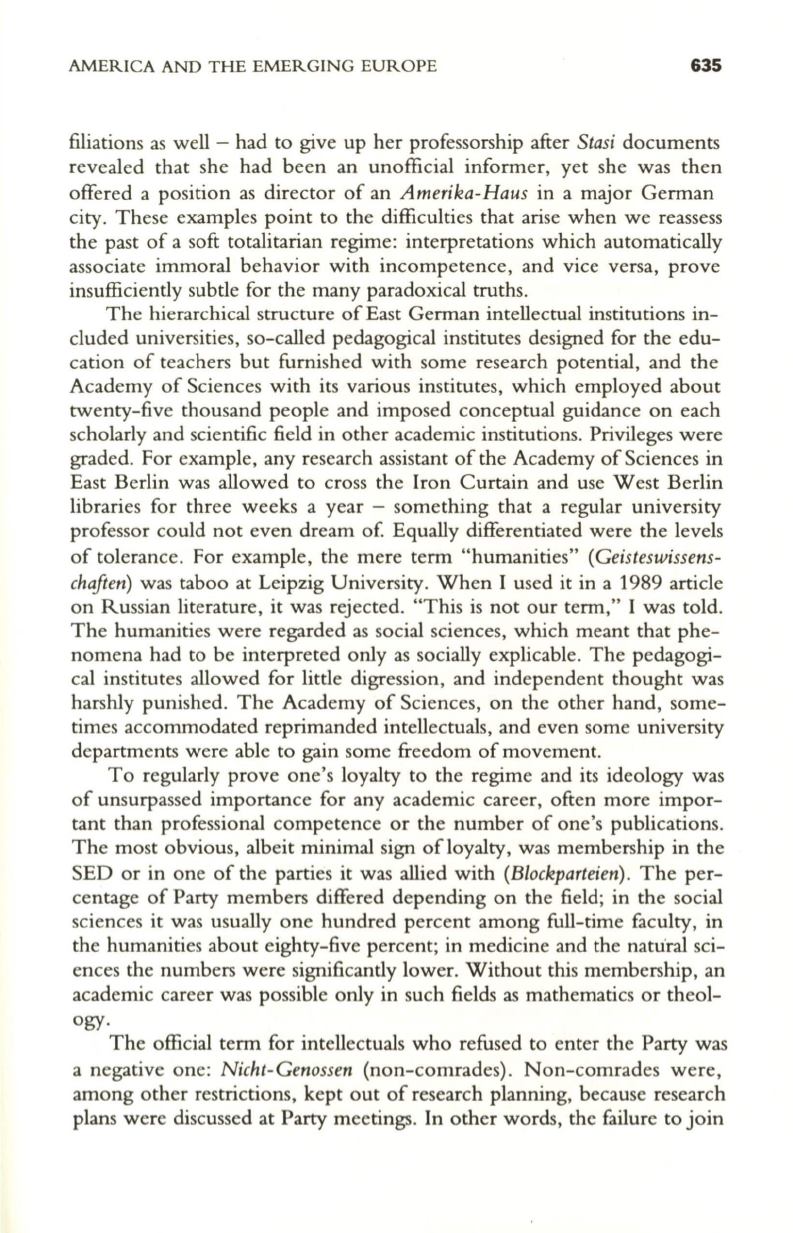
AMERICA AND THE EMERGING EUROPE
635
filiations as well - had to give up her professorship after
Stasi
documents
revealed that she had been an unofficial informer, yet she was then
offered a position as director of an
Amerika-Haus
in a major German
city. These examples point to the difficulties that arise when we reassess
the past of a soft totalitarian regime: interpretations which automatically
associate immoral behavior with incompetence, and vice versa, prove
insufficiently subtle for the many paradoxical truths.
The hierarchical structure of East German intellectual institutions in–
cluded universities, so-called pedagogical institutes designed for the edu–
cation of teachers but furnished with some research potential, and the
Academy of Sciences with its various institutes, which employed about
twenty-five thousand people and imposed conceptual guidance on each
scholarly and scientific field in other academic institutions. Privileges were
graded. For example, any research assistant of the Academy of Sciences in
East Berlin was allowed to cross the Iron Curtain and use West Berlin
libraries for three weeks a year - something that a regular university
professor could not even dream of Equally differentiated were the levels
of tolerance . For example, the mere term " humanities"
(Geisteswissens–
chaften)
was taboo at Leipzig University. When I used it in a 1989 article
on Russian literature, it was rejected. "This is not our term," I was told.
The humanities were regarded as social sciences, which meant that phe–
nomena had to be interpreted only as socially explicable. The pedagogi–
cal institutes allowed for little digression, and independent thought was
harshly punished. The Academy of Sciences, on the other hand, some–
times accommodated reprimanded intellectuals, and even some university
departments were able to gain some freedom of movement.
To regularly prove one's loyalty to the regime and its ideology was
of unsurpassed importance for any academic career, often more impor–
tant than professional competence or the number of one's publications.
The most obvious, albeit minimal sign of loyalty, was membership in the
SED or in one of the parties it was allied with
(Blockparteien).
The per–
centage of Party members differed depending on the field; in the social
sciences it was usually one hundred percent among full-time faculty, in
the humanities about eighty-five percent; in medicine and the natural sci–
ences the numbers were significantly lower. Without this membership, an
academic career was possible only in such fields as mathematics or theol–
ogy.
The official term for intellectuals who refused to enter the Party was
a negative one:
Nicht-Genossen
(non-comrades). Non-comrades were,
among other restrictions, kept out of research planning, because research
plans were discussed at Party meetings. In other words, the failure to join


